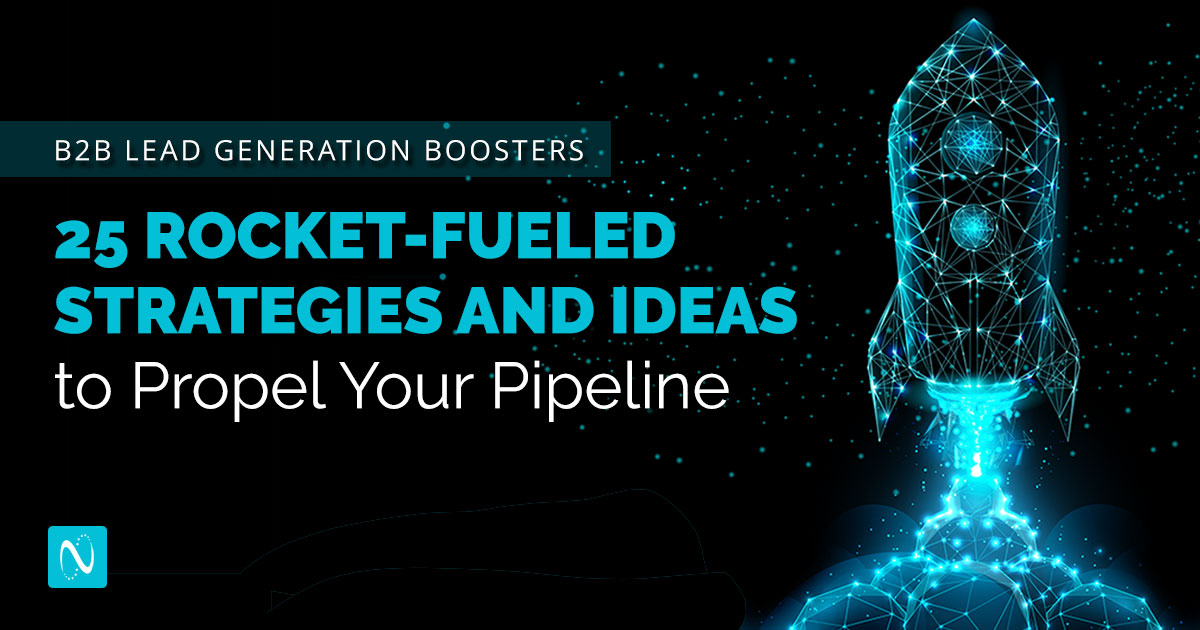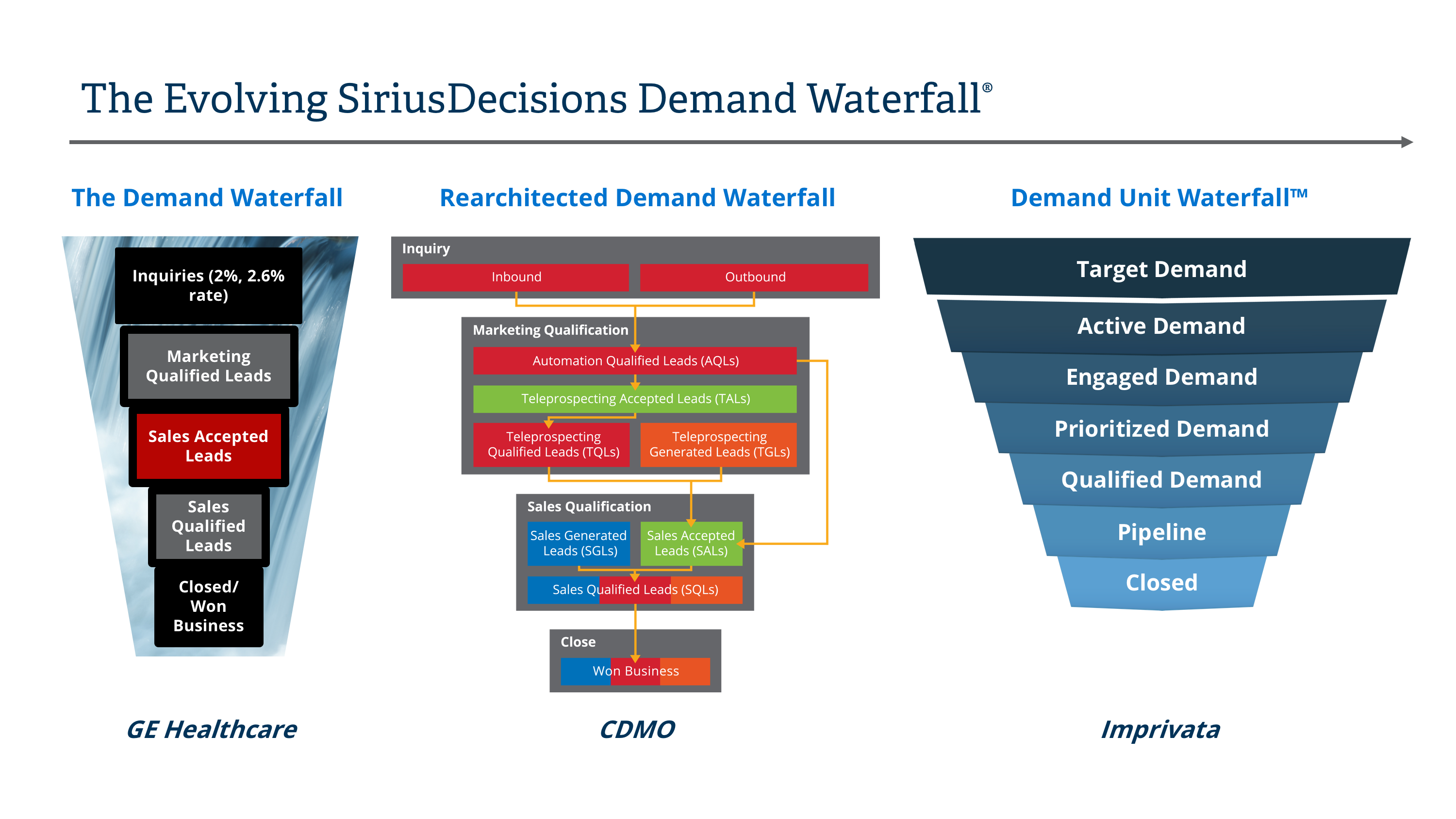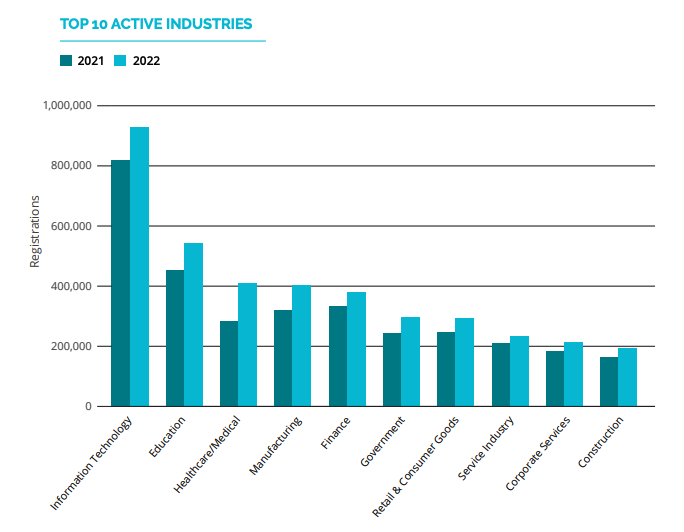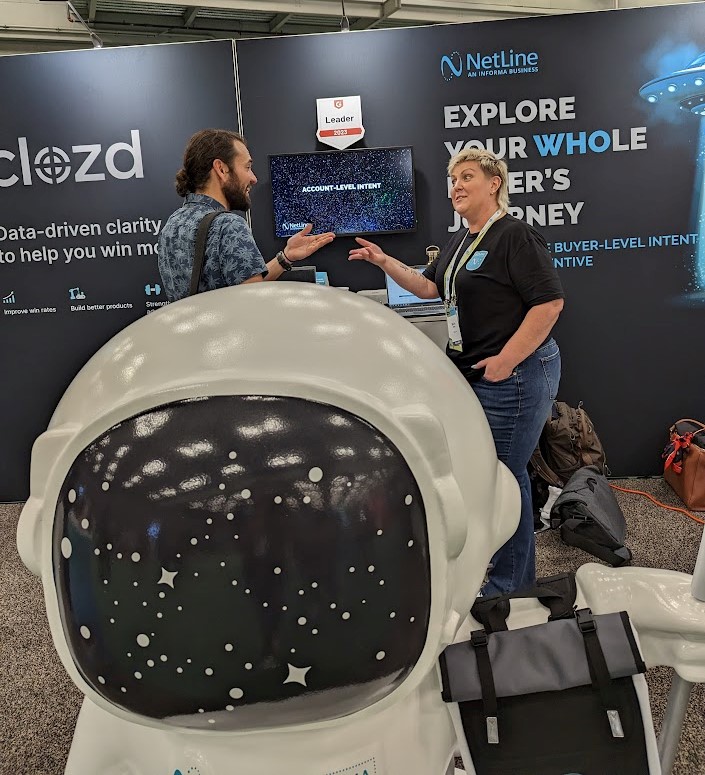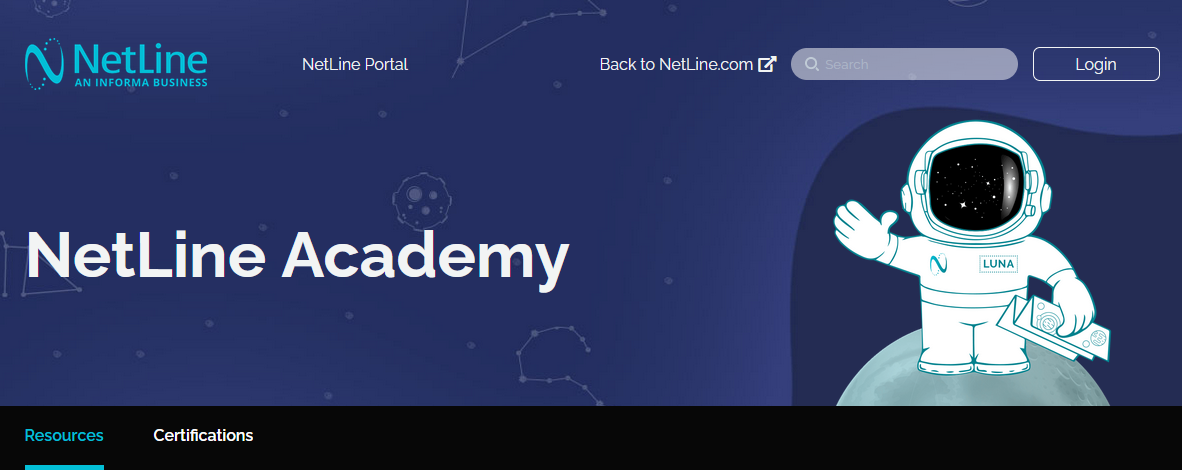B2B demand generation marketers face a growing list of challenges, from navigating complex buyer journeys to breaking through the noise of a crowded marketplace. High-quality, validated, opt-in leads are essential to driving sales and revenue growth, but generating them is no easy task.
With that in mind, here are 25 rocket-fueled strategies and ideas that can help propel your pipeline and turbocharge your B2B lead generation efforts. Before we do, let’s have a quick refresher on what B2B lead generation is and define the different types of sales leads that exist in the B2B world.
3… 2… 1… Blast off!
| Image caption: Take your B2B lead generation to the moon! Made using Midjourney |
What is B2B Lead Generation?
B2B lead generation is the process of identifying and capturing interest from potential customers in your product or service, with the ultimate goal of converting them into buyers. It plays a pivotal role in the sales process, connecting marketing efforts to revenue growth. Quality leads are essential for sales success, as they have a higher likelihood of becoming customers and generating long-term value for your organization.
What Are the Different Types of Sales Leads in B2B?
There are several types of sales leads in B2B, including:
- Marketing Qualified Leads (MQLs): Leads that have shown interest in your product or service and meet specific criteria established by your marketing team showing that they have a strong likelihood of becoming a buyer.
- Sales Qualified Leads (SQLs): Leads that have been vetted by your sales team and are deemed ready for direct sales engagement.
- Sales Accepted Leads (SALs): Leads that have been formally accepted by the sales team and are being actively pursued as potential customers.
There are also other lead types defined by industry bodies, technology vendors, and research firms as part of their own frameworks. For example, one of the most popular is the SiriusDecisions Demand Waterfall (known also as the Demand Unit Waterfall since 2017).
| Image: Versions of the SiriusDecisions Demand Waterfall. Source: Forrester |
Some of the lead types that have featured in versions of this model include:
- Inquiries (INQs): As the name suggests, these are leads that have come as the result of direct contact from potential customers. However, while they might be engaged, they might not be a good fit for your business.
- Automation Qualified Lead (AQL): As Forrester explains, this is “the stage where inquiries, both inbound and outbound, are loaded into the marketing automation platform (MAP). The AQL is the clearinghouse for capturing, cleansing, scoring, and routing the best inquiries to downstream functions.” In short, these leads have undergone some kind of assessment to prioritize them by value.
- Telephone-Generated and Telephone-Qualified Leads (TGLs and TQLs): These are leads that have either been generated by outbound phone calls or have been screened and qualified through a phone call or initial online meeting with a rep. In many cases, these leads will have been sourced or qualified by an external agency.
- Sales Generated Leads (SGLs): Any B2B marketer will know that reps are keen to source their own opportunities and leads. These are leads that are sourced by sales reps directly.
To add to potential confusion, the exact definition of what a “lead” is will vary between technology vendors and organizations. For this reason, both B2B marketers and salespeople should be clear on the definition of a lead within their own organization —as well as being clear on the definitions of other stages within the buying journey. There will likely be specific criteria that have to be met for any contact, account, or sales conversation to be classified as leads, target accounts, or opportunities that count against pipeline.
Knowing exactly ‘what’ makes a lead in your organization is vital because only those that meet your company’s own definition will count towards your personal targets and KPIs. This equally applies to any other pipeline stage or metric. So ask around for the definition before you commit to an approach, and if your company doesn’t have one, get agreement on what will count and what won’t.
Ignite Your B2B Lead Generation with These Rocket-Fueled Strategies
Having covered some essential B2B lead definitions, let’s explore a few approaches to turbocharge your revenue growth and fuel up your pipeline. Each of these strategies could inspire countless articles, eBooks, and even entire career paths, so the information here serves as a brief introduction.
Strategy 1: Content Marketing for B2B Lead Generation
Buyers appreciate engaging with top-notch content, making high-quality, valuable content essential for B2B lead generation success. A study from Demand Gen Report and Demandbase reveals that 62% of B2B buyers chose to buy from a vendor that provided high-quality content. Moreover, NetLine’s 2023 State of B2B Content Consumption and Demand Report reveals that content marketing remains a top priority for B2B marketers.
| Image Caption: Great content remains key to effective B2B lead generation. Across the board, buyers are increasing their content consumption no matter their industry. Source: NetLine’s 2023 State of B2B Content Consumption and Demand Report |
When it comes to types of content that B2B audiences are interested in, NetLine’s report also shows that eBooks, guides, and cheat sheets lead the pack. However, buyers are still educating themselves with white papers, case studies, and webinars.
But even the best possible content will do little if it doesn’t reach your buyers. To maximize your content’s impact, focus on effective distribution and promotion strategies. Remember to meet your buyers on the channels they use.
Strategy 2: Account-Based Marketing (ABM)
ABM is a targeted approach to B2B lead generation that focuses on high-value accounts rather than individual contacts. By pinpointing and targeting these accounts, you can streamline your marketing efforts and enhance the quality of leads and contacts you acquire. Target accounts are chosen using data such as first-party intent and engagement signals, as well as sales team-selected data and firmographics. As a result, some may argue that ABM doesn’t quite align with the traditional understanding of B2B lead generation.
Best practices for executing ABM campaigns include aligning sales and marketing teams, using data-driven insights and personalizing your messaging.
Strategy 3: Content Syndication
Content syndication enables quick and easy distribution of your content across various B2B media, trade publishers, and third-party websites. Instead of negotiating individual commercial agreements, content syndication platforms enable you to promote your content across an entire network of sites that use platforms like NetLine.
Because such networks have total audience sizes that reach into the millions, content syndication is a fast and highly effective method of expanding your content’s reach and visibility. Aside from network size and audience reach, some things to look out for when choosing B2B lead generation vendors for content syndication include:
- Which industries and audience profiles are available?
- How can you customize your campaigns to collect the right data and target the right audience?
- Are there program management features or services to monitor, analyze and optimize your campaigns?
- Are performance-based lead gen programs offered?
- Do they provide hyper-targeting and filtering so you only pay for leads meeting your specific criteria?
The good news is that you don’t even need to schedule a sales call to get started. As well as providing access to the largest content syndication network on the market, NetLine offers both self-service and managed B2B lead generation solutions.
Strategy 4: Social Media for B2B Lead Generation
Social media platforms, especially LinkedIn and Twitter, play a crucial role in B2B lead generation and are perfect examples of meeting potential buyers on the channels they use. Optimize your profiles and engage with your audience.
Utilize social listening and engagement tools to understand what buyers are saying about your products or services, their opinions on your campaigns and events, and to stay updated on industry trends. These tools also provide valuable insights into audience discussions about your competitors.
Strategy 5: Email Marketing and Lead Nurturing
Email is far from dead. In fact, email marketing remains a powerful tool for B2B lead generation. To make the most of your email marketing, create compelling email campaigns and use lead nurturing to guide prospects through the sales funnel.
Timing is critical in the sales process, so when you send emails can have a significant impact. Keep in mind that there is a gap between when content is requested and when it’s actually consumed. Salespeople should hold back and not reach out too soon, giving potential leads time to consume and digest your content.
Strategy 6: Identify Buyers with First-Party Intent Data and Lead Scoring
Today’s B2B marketing technology provides a huge amount of potential to know exactly “who” your buyers are. But to do so requires using data intelligently to sift out those who will only ever browse from those who might buy —and crucially when they might buy.
There are scores of suppliers who promise lists of buyers sourced from third-party data, but data that is collected directly (first-party data) offers a host of particular benefits.
In short, first-party intent data offers unique insights into prospects’ online behavior —and because it’s collected directly, its quality and validity can be assessed transparently. This data presents a greater potential for identifying and prioritizing high-quality and verified leads. Unlike many third-party intent data sources that only offer vague indications of “intent” at an account level, leads sourced through first-party buyer intent data reveal “who” the buyer is, as discussed in a previous post on What Exactly Is B2B Intent Data and Where Does It Come From?
Since not all your first-party data will relate to buying signals, you should also use lead scoring (i.e. assigning a numerical value to leads based on predetermined attributes) to focus on leads with the highest potential to become buyers. You’ll also want to integrate intent data into your marketing automation tools for maximum impact. For example, here’s how to integrate your NetLine portal with Marketo.
Strategy 7: Search Engine Marketing
SEO and PPC are potentially powerful channels for B2B lead generation, as you can attract buyers to your content and website when they are actively searching for information through search engines like Google and Bing. The keywords they use can also reveal where they are in the buying journey, which is why focusing on high-intent keywords can be particularly effective, albeit expensive.
To stand the best chance of ranking organically (and to maximize your Quality Score for PPC), optimize your on-page and off-page SEO factors. According to the Digital Marketing Institute, some best practices for on-page SEO include using title tags, incorporating relevant and optimized headings, and prioritizing page load speed. For off-page SEO, be sure to include local SEO in your strategy and submit back-linked content.
When creating effective PPC campaigns that drive targeted traffic to your website, remember to set goals for your campaigns, carefully choose which keywords to bid on, and create attention-grabbing ads with a call-to-action. Continuously monitor your ads’ performance and make necessary adjustments to your keywords.
Strategy 8: Webinars and Virtual Events
Webinars and virtual events offer significant benefits for B2B lead generation. Research from last year shows that these two channels are considered the most effective top-of-funnel demand gen tactics by B2B marketers.
However, a boring webinar or virtual event is unlikely to be successful at generating engaged B2B leads. To keep your audience interested and leave them wanting more, get them actively involved by using engagement tools such as quizzes, Q&A, and polls. Employ presenters who are both engaging and knowledgeable, especially for audiences that are likely to have deep subject matter knowledge such as IT professionals and healthcare providers.
Promoting your webinars or virtual events is also crucial to increase registrations and attendees. Maximize your reach using email invites and dedicated landing pages. Send a follow-up email a day or two before the event to capture last-minute sign-ups. Finally, make your webinars and virtual events on-demand so attendees can watch them whenever and wherever they prefer.
Strategy 9: Strategic Partnerships and Referral Programs
Partnering with complementary businesses can be highly effective in generating leads. Benefits include increased visibility and enhanced credibility. Strategic partnerships can also be a cost-effective way to reach new customers and generate leads by sharing resources for promotion. Indeed, even with NetLine’s own network at our disposal, we still work with partners such as ON24 and the ABMLA as part of our own marketing.
Creating and managing referral programs is another effective strategy for lead generation. These programs encourage existing customers (as well as partners such as authorized service providers and system integrators) to refer others to your business. Keep referral programs simple and straightforward. Offer incentives, and be sure to monitor and measure your program’s effectiveness, making adjustments as needed to ensure it generates desired results.
Strategy 10: Online Communities and Networking
Online communities, such as industry forums and groups, can be valuable lead sources for B2B marketers. By engaging with these communities, you can establish yourself as an authority in your industry and build relationships with potential buyers.
Stand out in these online communities by being helpful and providing value to the community, sharing your expertise, and helping others solve problems. Remember, it’s essential to be authentic when interacting in the community and while networking.
Industry events offer opportunities to meet potential buyers face-to-face and establish relationships. These events provide the chance to forge personal connections with leads, as well as generate brand exposure and awareness.
| Image caption: The NetLine team doing face-to-face lead generation at Forrester’s B2B Summit |
Strategy 11: Optimizing Existing B2B Lead Generation Efforts
Finally, it’s important to track and measure the performance of your existing lead generation efforts to make sure they are generating the desired results. After all, ramping up investment in B2B lead generation only makes sense when you are confident that you can deliver results.
At the most basic level, track KPIs such as conversion rate, cost-per-lead, and return on investment (ROI). By checking these KPIs and using data-driven insights, marketers can optimize their efforts and generate more leads.
How to Generate B2B Leads: 14 Lead Generation Ideas for B2B Marketing Inspiration
Now that we’ve discussed some strategies that will boost your B2B lead generation, here are some ideas and tactics that will help fuel your efforts even further.
Idea 1: Offer a Free Tool or Resource
As any B2B marketer at a conference can confirm, swag and freebies attract buyers like flowers attract bees. But offers don’t have to be physical to lure in leads.
Free tools or online resources, like the Audience Explorer, can be highly effective for generating leads and overall awareness, in particular when you are offering something both useful and unique. Identify a valuable resource that resonates with your target audience and promote it to drive engagement.
Idea 2: Launch an Industry Survey and Share the Results
Conducting industry surveys can provide valuable insights as well as generate leads. A well-designed survey and resulting report have the added benefit of putting your organization at the forefront of thought leadership.
Create surveys that help you gain insight into your target audience. Promote your survey through email or even on a webinar or virtual event. Once your survey is complete, share the findings in a report, eBook, and/or infographic using your various content channels.
Idea 3: Host a Joint Webinar with a Complementary Partner
Co-hosting webinars with complementary partners can expand your audience and generate new leads. Selecting partners is critical. Look for partners who share a similar customer base but are not your direct competitors. Choose topics of mutual interest that address the known pain points of potential buyers to show how your organization and your partner can alleviate those pains.
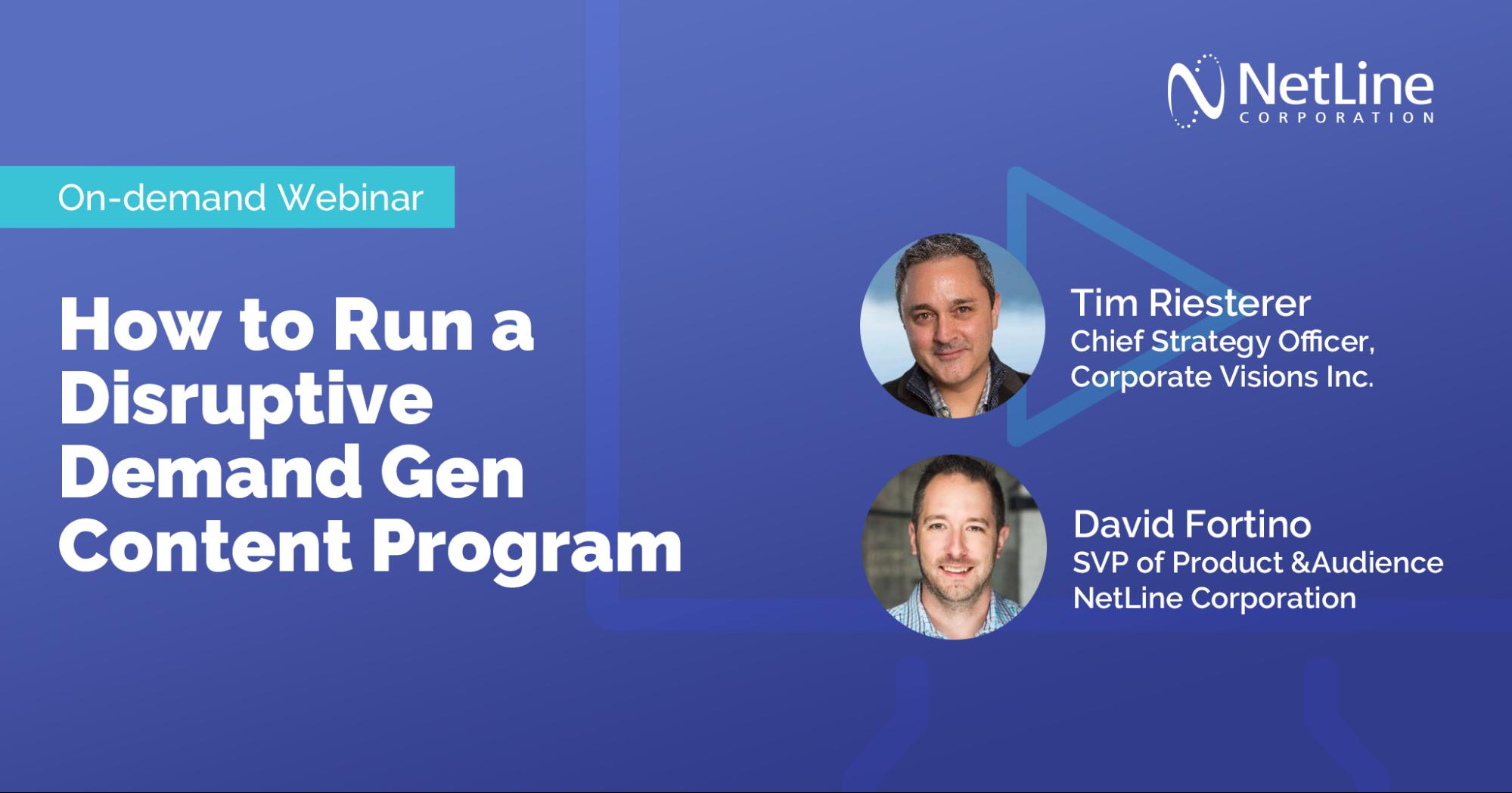
Image caption: Partner webinars are a favorite lead gen tactic at NetLine, such as this one on How to Run a Disruptive Demand Generation Content Program
Idea 4: Create an Interactive Quiz or Assessment
Interactive quizzes or assessments can generate leads by providing personalized insights and recommendations. These work well during webinars but can also be hosted on your website or through social media channels —and you can even use them on kiosks at in-person events.
Design engaging quizzes that resonate with your target audience while providing insight into their needs and pain points. A customized report or list of recommendations is a powerful incentive for a buyer to share their details with you.
Idea 5: Create an Online Course or Offer Certification
Offering online courses or certifications, like NetLine Academy, Salesforce Trailhead and certifications from Demandbase, can attract leads seeking professional development. Create valuable training materials and promote your courses to reach the right audience.
Give participants something to show for their efforts, such as a digital certification. These provide your audience with something to share on platforms like LinkedIn, boosting visibility and attracting further leads through social proof.
Idea 6: Host a Giveaway or Contest
Giveaways or contests can generate excitement, create positive feelings about your brand, and ultimately generate leads. Create and promote a compelling contest that aligns with your target audience’s interests. Ensure the rules are spelled out clearly and are easy to follow. Don’t forget to provide CTAs to guide participants toward what you want them to do next.

“Image Caption: Would you prefer the Cadillac El Dorado or a set of steak knives?” Start by generating high-quality B2B leads and you’ll be driving into the sunset. Made using Midjourney.
Idea 7: Use Influencer Marketing to Promote Your Content and Attract New Audiences
Make use of influencer marketing to expand your reach and build interest in your products or services. In B2B, having big names (e.g., Scott Brinker or Jay Baer) can drive more than net-new names and can potentially lower CPA even with any fees.

Image caption: Don’t just take our word for it —Jay Baer also loves NetLine’s 2023 State of B2B Content Consumption and Demand Report
When choosing the right influencers to work with, first establish your goals for your influencer campaign and then pick influencers that align with those goals. Collaborate with your chosen influencers to create content and tap into their networks for increased exposure.
Idea 8: Gamify Your Content with a Competition
Much like giveaways and contests, competitions can drive engagement and create excitement around your brand, because, let’s face it, everyone loves a game. Gamifying your content means that buyers will stay on your website, engaging with your content and providing you with rich data so marketers can learn more about leads.
Savvy marketers will develop fun and challenging competitions that are not only engaging but also provide insights into what buyers are looking for. That information can be used to reach out in a much more personal way.
Idea 9: Develop an Augmented Reality Experience (or Something Else Futuristic and Attention Grabbing)
Although using Augmented Reality (AR) may seem novel or even gimmicky, innovative experiences like AR can generate buzz and bring in leads by helping your business stand out. With buyers spending an increased amount of time researching solutions and products on their own before getting in touch with sales, these experiences also provide buyers with the opportunity to see what your brand has to offer remotely.
Create a unique, immersive experience that aligns with your brand and product offering, and make sure to promote it effectively on channels such as social media and email.
Idea 10: Create a “Choose Your Own Adventure” Interactive Story
While creating a “Choose Your Own Adventure” interactive story may feel a bit left of field for the world of B2B marketing, it can be an effective and fun way for potential leads to engage with your brand on a deeper level and provide a memorable and enjoyable experience, leaving your brand top-of-mind with those who participate.
When creating an interactive story, it’s important to consider your audience’s interests and pain points. By tailoring your story to their specific needs, you can create a more impactful and engaging experience. Additionally, make sure you promote your story through various channels. Consider partnering with influencers or industry experts to help spread the word and reach a wider audience.
Idea 11: Host a 24-Hour Livestream Event
We’ve already discussed the value of webinars and live events when it comes to B2B lead generation, but what about taking it up a notch and hosting a 24-hour livestream event? While this type of event will take a lot of planning and stamina (as well as potentially some pre-recording), it can be effective in attracting leads, especially if your target audience is global.
The key to the success of a 24-hour event is to make sure you have plenty of compelling content throughout, knowing that even if people are sleeping soundly in the US, leads in the APAC regions have started their day. This is also a great opportunity to enlist the help of partners to share the load and audiences.
Idea 12: Launch a B2B Online Treasure Hunt with Hidden Prizes
Another fun and creative way to generate leads is to create and launch an online treasure hunt with hidden prizes. Treasure hunts are a highly interactive way to engage with your target audience while creating brand awareness and driving traffic to your website.
In creating your treasure hunt, it’s important to keep in mind that the main appeal is the excitement of the search and the potential rewards. Prizes should be desirable and relevant to your target audience. You can also increase the appeal by creating a sense of urgency and exclusivity, perhaps by limiting the number of participants or offering exclusive prizes for early participants.
Promote your hunt using channels such as social media and targeted email campaigns. During the execution phase, make sure it is easy to participate in and that the rules are clear and straightforward. Don’t forget to follow up with participants and leads in a timely and personalized manner to capitalize on the momentum created by the treasure hunt.
Idea 13: Create a Unique B2B Product or Service Mascot
While a mascot may not be able to generate leads on its own, what they do is help create brand awareness and recognition. Mascots like NetLine’s Luna, Salesforce’s Astro and Einstein, and MailChimp’s Freddy are memorable and are easily associated with their respective brands in the minds of buyers.
When developing a unique mascot, keep it simple and align it with your brand and its values. Use your mascot in your marketing content, but don’t overdo it. Even the most adorable mascot can become a nuisance if they show up too often or in the wrong kind of content.
Idea 14: The Tried-and-Tested Fancy Dinner, Hot Tickets to a Show or Game, or an Invite-Only Event at a Swanky Resort
Not many people would decline a fancy meal, an exclusive event held at a resort, or tickets to the hottest show in town. Marketers and salespeople have been successfully using this tactic to lure prospects for years. Even in this highly digital age, buyers still like the face-to-face that comes with dinners and events.
The key to the success of this tactic is exclusivity. Make your guests feel special by sending invitations the old-fashioned way, through direct mail or, at the very least, through a highly personalized email.

Image caption: “Pardon me, as well as your B2B lead generation services, would you happen to have any Grey Poupon?” Made using Midjourney.
Still Struggling? Here are Some Tips to Quickly Improve the Quality of Your B2B Sales Leads
- Revisit and refine your buyer personas: Buyer personas are essential for effective B2B lead generation. Revisit and revise these personas based on new insights and data.
- Implement a rigorous lead qualification process: Make sure your salespeople are focusing on high-quality leads that are most likely to convert by implementing a process that takes into account factors such as budget, decision-making authority, and purchase timeline.
- Continuously optimize your lead nurturing campaigns: Be sure that you are delivering the right content to the right people at the right time by using data and analytics to track the effectiveness of your campaigns
- Regularly audit and update your existing content: Content is the fuel that powers your B2B engine, and regular audits and updates to your content will ensure that it remains relevant, accurate, and engaging. Look to customer feedback and analytics to identify areas for improvement.
- Use data and analytics to make data-driven decisions: Use data and analytics to inform you of the effectiveness of your lead generation campaigns, identify areas in need of improvement, and let it guide you in making decisions.
- Invest in ongoing sales and marketing alignment efforts: It cannot be overstated how important sales and marketing alignment is to the success of any B2B organization. Prioritize efforts to align your sales and marketing teams, including holding regular meetings and making sure communication channels are open.
- Test and iterate new lead generation strategies and tactics: Don’t be afraid to try new lead generation strategies and tactics like the ones discussed in this post. Test and iterate until you find the ones that work best for your organization.
By implementing some or all of the above strategies and ideas and continually refining your approach, you can boost your pipeline and drive sales success. Be sure to share this post with others and don’t forget to provide your feedback.
Want to know more about how NetLine can help you get B2B leads? Check out our range of lead generation solutions.

Image caption: When your B2B lead generation engine is firing at full power, expect to see marketing results that are out of this world. Made using Midjourney.
FAQs on B2B lead gen that might be on your mind
How much is a B2B lead worth?
It’s important to distinguish between cost-per-lead (CPL) and the value of a lead to your organization. Two companies targeting the same buyers, at the same time and on the same channels will have largely the same CPL —but if one of those companies converts leads to buyers more efficiently and/or makes far more profit per customer, the value of that lead will be higher. Aside from internal factors, the value of a B2B lead can vary greatly depending on the industry, the product or service being sold, and the quality of the lead.
Starting from $9 per lead, NetLine offers a highly-efficient way of generating B2B leads with its targeted performance-based campaigns—especially when the average cost-per-lead across channels and industries is estimated to be almost $200.
How much do B2B lead generation companies charge?
The cost of B2B lead generation services can vary depending on the company you choose and the specific services you require. Some companies charge a flat fee for a set number of leads, while others charge based on the number of hours worked or the specific tactics used.
Lead generation agencies (especially telemarketing agencies) often work on a retainer basis, with an initial setup fee followed by a rolling commitment. Some agencies will take a multichannel approach to lead generation, sourcing leads from a variety of channels.
As a rough benchmark, most firms that offer a managed lead generation service will charge at least $2,000 a month. Whether this works out as a good investment for your lead generation depends on a large number of factors.
Why is B2B lead generation hard?
B2B lead generation can be challenging for a variety of reasons. One of the main challenges is the fact that B2B buyers are often more sophisticated and have higher expectations than B2C buyers. Additionally, B2B sales cycles tend to be longer and more complex compared to consumer purchase journeys, which can make it difficult to attract and convert leads.
Without access to high-quality buyer intent data, it can be very difficult to separate those who are in market from those who have no desire to buy. That’s why NetLine emphasizes the importance of using first-party, buyer-level intent data compared to other forms of buying signals.
What is the number 1 challenge in lead generation?
Lead quality is often cited as the top challenge in studies of B2B marketers. A study by Ascend2 in 2022 found that 42% cited generating quality leads to be a top challenge, compared to just 33% that listed generating enough leads.
As B2B buyers consume increasing amounts of content, lead quantity is likely to become less of a challenge, although business pressures rarely reduce targets based on the number of leads.
How can I get B2B leads for free?
While there’s no magic formula for getting high-quality B2B leads for free, there are a few strategies you can try. One approach is to use your existing network by asking for referrals and recommendations from current and former clients, business partners, and industry contacts. You can also try creating high-quality content that’s designed to attract potential leads to your website or social media profiles. Finally, consider participating in online forums and groups where your target audience is likely to be active, and engaging with them in a helpful and informative way.
Remember that the cost of generating B2B leads and sales opportunities doesn’t only consist of paid spend. Factors such as headcount, capital spend, and even the cost of office space for marketing employees should be factored in, which is why many companies (and especially high-growth companies) track the ratio between Lifetime Customer Value (LTV) and Customer Acquisition Cost (CAC) as a key metric, with CAC factoring in all total sales and marketing costs to the business.
